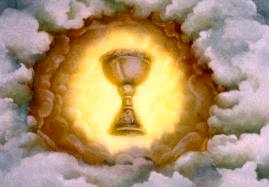![]()
 Remember all those times you’ve been at one hit point or sprawled all over the dungeon floor, bleeding out, moments from oblivion?
Remember all those times you’ve been at one hit point or sprawled all over the dungeon floor, bleeding out, moments from oblivion?
And then, at the last moment, a friend (hopefully!) swoops in and jams a healing potion down your throat? Or casts a cure wounds spell – or the holy grail of healing spells, heal. Your eyes fly open, your consciousness powerfully aware of your near-death experience, of your very real mortality.
Or those times where there were no spells or potions left, or they weren’t strong enough. So your friends did what they could to buy time – bandages, setting bones and so on while you slept, hoping you would wake up, frantically carrying or dragging your body to help.
And how about those times when you and your friends needed days, weeks, even months to recover from facing down one of the most mighty, vile and vicious villains that only come along once every campaign or two. Broken bones, broken spirits, broken lives – only time could mend all the fallout, all the loss, all the sacrifice.
That is how healing should look, sound and feel! Dramatic, cinematic, or urgent – sometimes all three.
Healing: A Natural & Supernatural Flashback
So in what D&D edition does this sort of healing exist? Where is this approach to healing best represented?
There was an edition where there were two clearly understood healing options. And within those, there were two clear tiers of power.
First, there was magical healing. It began with the more modest cure spells, whether spoken, bottled or written. Next, beyond the common healing spells, scrolls and potions, there were just a handful of extremely powerful heals that mended nearly every broken bone, disease or other malediction.
Second, there was natural healing. Those who studied the mundane arts of healing and herbalism, using everything from bandages to incense to pain-numbing plant pastes and resins, could offer slow, but steady recovery. Still, this sort of natural healing paled in comparison to the most classic healing method of all: a good night’s rest. While still slow in comparison to magical healing, sleeping and full bed rest were king when it came to natural healing.
And that was essentially AD&D 2nd edition healing. Simple, believable, and useful on the natural side while more expedient and powerful and dramatic on the magical side. No intrusive mechanics bending or breaking the story.
While 3e retained much of that healing ideal, 4e’s mechanically sound healing surges changed the game.
Mechanically sound? Yes. Mechanically intrusive? Also, regrettably, yes. Not once has any healing surge or “short” or “extended” rest – whatever the hell those mean! – blended seamlessly with the unfolding story. In fact, I bet you remember some really gamey, immersion-breaking mathlons at higher levels, don’t you, just to heal up from a big fight? Ooo, fun!
The Holy Grail?
As I told you last time, there were some disturbing thoughts on the direction and style of D&D Next’s healing in recent Legends & Lore column thoughts.
Healing is all over the place; it’s simply not cool right now. It’s not dramatic, cinematic or urgent – at the very least, it’s not enough of any those. There are a handful of healing approaches in Next to playtest right now, from new Hit Dice rules to a relevant Bloodied cap to simple flat-rate healing.
I am experimenting with the latter – the latest ultra-simple Legends and Lore suggestion of flat natural healing rates of level times hours. Combined with healing magic, it looks like a 2e/4e hybrid on paper. We’ll see how that goes in my current D&D Next mini-campaign on the high seas. I’ll keep you posted – and keep Wizards posted through Next survey feedback.
But why wait? I’ve made my ideas clear. What about you? What are your ideas on the holy grail of healing in D&D Next?
Speak or die! (Don’t worry, I’ll heal you.)